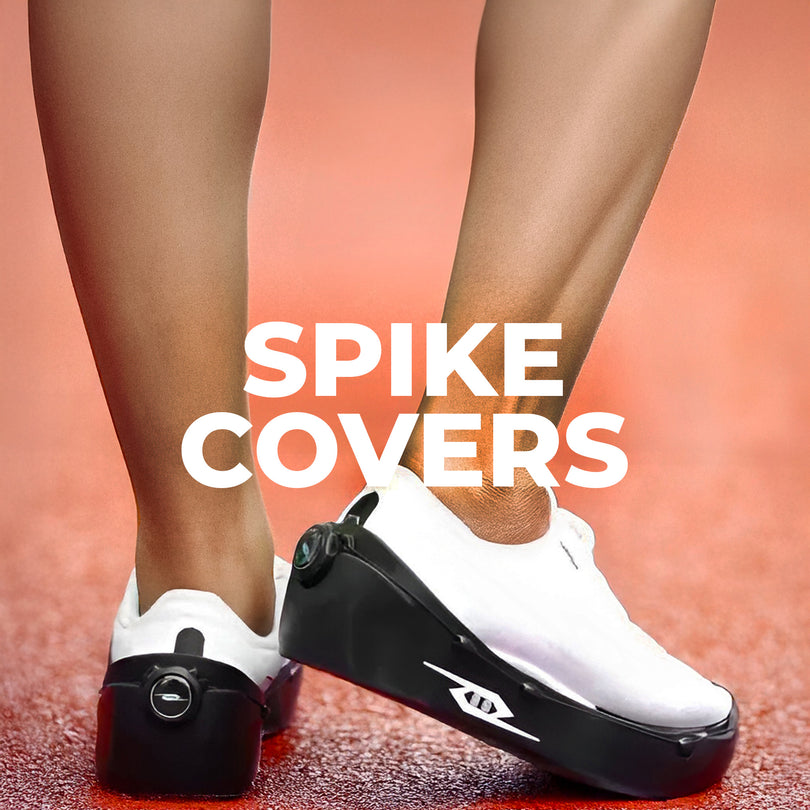Since humans started organizing races against each other, the main goal has been to be the fastest. For many runners, this means wearing track spikes to give them the upper hand over their competition. However, track spikes haven’t always been the technologically advanced equipment they are now. So, how did we get to where we are today, with carbon fiber plates, bright colors, and space-age materials?
Track spikes were initially designed around the 1850s and couldn’t have looked any different from today’s shoes if they had tried to. They were heavy, dull, and didn’t breathe well at all. Essentially, they were little more than men’s dress shoes with metal spikes in the bottom. Cowhide was used for the first shoes, which was eventually replaced with kangaroo hide once manufacturers started looking for ways to shed some weight.

Image © Adidas
In 1890, an English company called J. W. Foster and Sons began making shoes. The owner, Joseph Williams Foster, was an avid runner who wanted to design shoes that would enable him to run faster. Their running spikes were lightweight, made of leather, and had a band for extra lateral support.
These shoes were very popular with British athletes during the Olympics in the early 1900s. None of those pairs were more famous than the pair Harold Abrahams wore while on his way to the 100-metre gold at the 1924 Olympic games, which inspired the Academy Award-winning film Chariots of Fire.”
The name J. W. Foster may not be familiar now, but it was in business until 1976, when it was absorbed by Reebok, which Foster’s sons established.
The 1920s was when another family, brothers Adi and Rudolf Dassler, decided to enter the shoe market. The German brothers started a small sports shoe company specializing in track and field footwear called Gebrüder Dassler Schuhfabrik, or Geda. Eventually, though, a rift opened between the two siblings, and they went their separate ways. Adi started Adidas in 1949 (using the old Geda factory and ⅔ of the employees), while Rudolf set up long-time bitter rival Puma (originally called Ruda) right across the river.
The 1936 Olympics put Adidas, and track spikes as a whole, on the map when Jesse Owens wore them as he ran away from the rest of the pack to win gold. Previous track spikes had been rather heavy and awkward, but Jesse's pair had been handmade by Adidas, putting the shoe manufacturer in the spotlight. Although they still looked nothing like today’s track spikes, they helped to put Adidas on the map as a leader in athletic footwear.

Image © Adidas 1936
For the most part, track spikes stayed the same through that era until the late 1960s, when new materials were introduced into shoe manufacturing. Adidas once again changed the design of spikes, this time in the long-distance category. In 1964, Decathelte Willi Holdorf won gold at the Olympics, wearing Adidas shoes with raised heels and a full-length midsole. This allowed him to run on his toes and was the first iteration of spikes that look remotely like what we know as spikes today.

Image © Adidas 1964
Along with almost every other industry, the mass production of plastic changed shoe design and manufacturing forever. Plastic bottom plates were added into shoes, allowing spikes to be added and removed as a runner saw fit. It wasn’t long after that leather uppers started to disappear as well, making way for synthetic materials that were both lighter and allowed the feet to breathe better.
The shoe market changed forever with the integration of carbon fiber into shoes, which is especially true for track spikes. Of all the race distances, track races are where shaving a few hundredths of a second can make a massive difference in the standings. Therefore, it should be no surprise that the manufacturers quickly incorporated carbon into track spikes.

Image Nitro Spikes
There have been some forgotten one offs throughout the years, too. Who can forget Zytel? Forgive me if you’ve never heard of it. It was a material designed by Nike that was a lightweight combination of nylon and fiberglass. While they were extremely lightweight, weighing in at less than 3.2 ounces, that didn’t come without a downside - their purpose was to be used for a single race and then discarded. Track spikes are known to wear out fast, but that’s a bit extreme!
Track Pins
The spikes themselves have changed considerably over time, too. The first spikes were nothing more than nails secured into the shoe's sole, making them heavy, uncomfortable, and not customizable like today’s shoes are.
It wasn’t until plastic began being used in the soles of shoes that track pins started to change. Allowing pins to be changed or moved around the shoe depending on the surface or event meant that manufacturers could begin to experiment with different shapes and styles of pins. Gone were the old days of simple metal spikes fastened permanently into the shoe's sole.

This also allowed shoes to be configured for multiple events, with the runner being able to change not just the location of the pins but the style and size of the pins as well. Runners could now modify their shoes to their liking and not just wear a one size fits all solution like they did in the past.
So, where do track spikes go from here? I’m sure that manufacturers, while still working on making carbon plated shoes even faster, are already looking down the road for the next innovation in fast footwear. The question is, how long until we see it on the feet of Olympic sprinters?

















